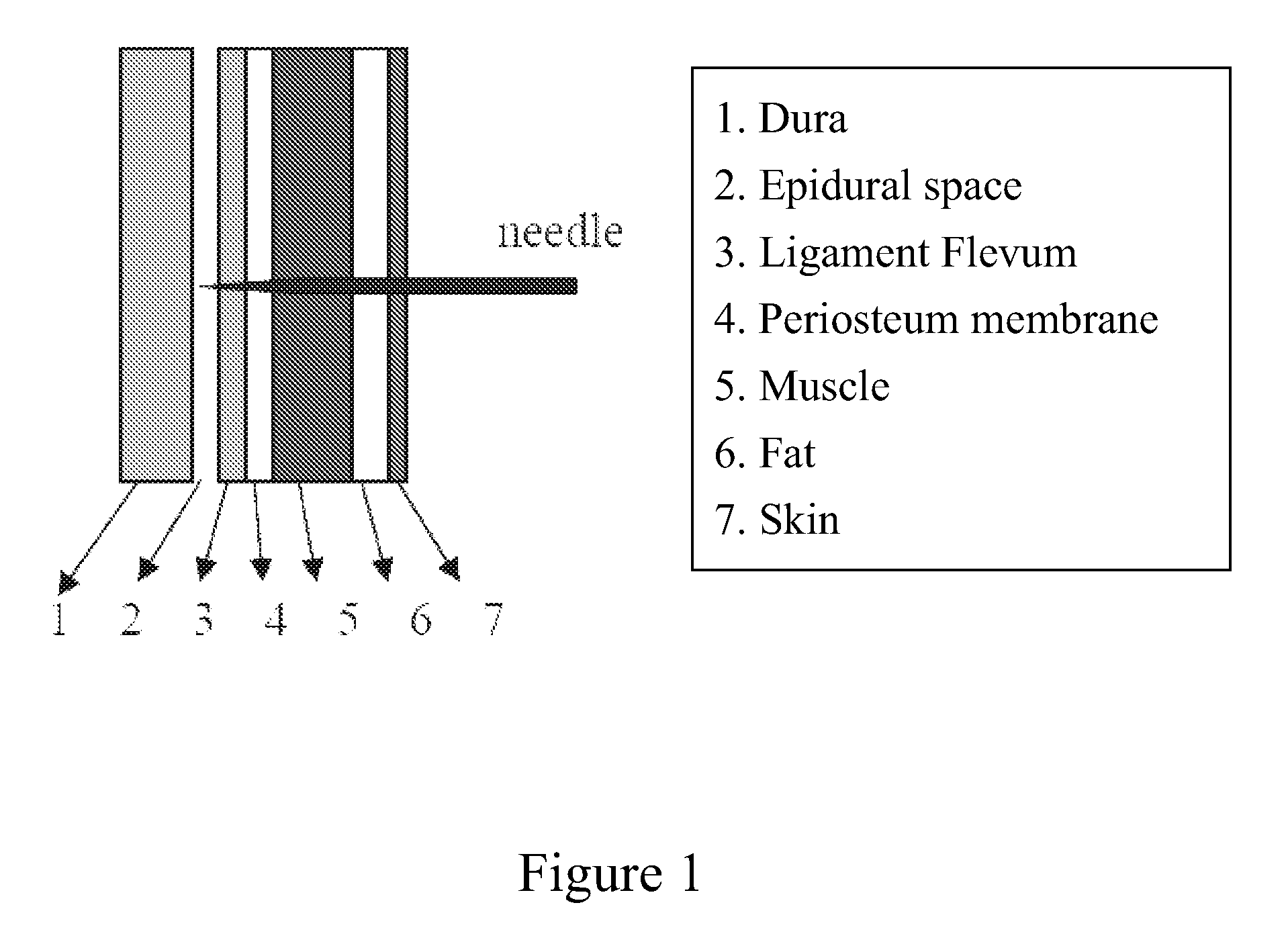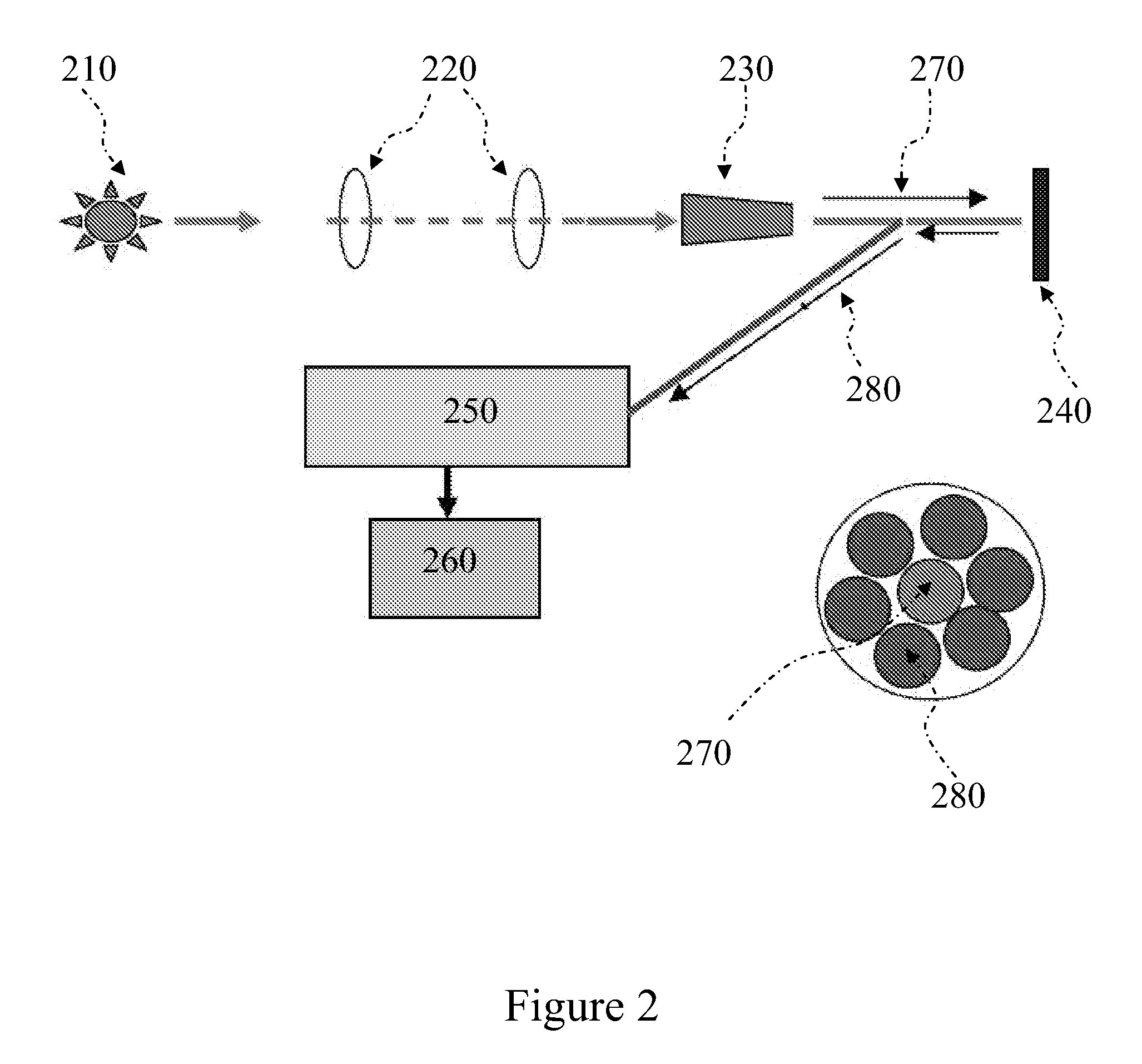Spinal Cord's Epidural Space Detection By Using Fiber Optic Technology
a fiber optic technology and epidural space detection technology, applied in the field of hypodermic needles, can solve the problems of weak resistance of ligaments, headache or severe spinal injury after puncture of spinal cord, and tenacity of ligaments,
- Summary
- Abstract
- Description
- Claims
- Application Information
AI Technical Summary
Benefits of technology
Problems solved by technology
Method used
Image
Examples
Embodiment Construction
[0017]The idea of this invention is derived from the concept that different tissues due to their different composition have different optical properties, such as absorbance and reflection, so we can discriminate the tissue types where the needle reaches by their distinctive optical properties. Thus we provide a new device and a new method for tissue puncture, especially for epidural anesthesia, that can position a hypodermic needle in real time through optical technology to improve the accuracy of surgery.
[0018]FIG. 1 shows a longitudinal profile of human posterior part and the tissue layers from outside to inside are skin, fat, muscle, periosteum membrane, ligament flavum, epidura space, and dura, but the spin is not indicated in this figure. During epidural anesthesia, the periosteum membrane is not necessary punctured.
[0019]In the present invention, the hypodermic needle used in the device is a normal clinical needle, which has a hollow inner bore to place an inner needle filled ...
PUM
 Login to View More
Login to View More Abstract
Description
Claims
Application Information
 Login to View More
Login to View More - R&D
- Intellectual Property
- Life Sciences
- Materials
- Tech Scout
- Unparalleled Data Quality
- Higher Quality Content
- 60% Fewer Hallucinations
Browse by: Latest US Patents, China's latest patents, Technical Efficacy Thesaurus, Application Domain, Technology Topic, Popular Technical Reports.
© 2025 PatSnap. All rights reserved.Legal|Privacy policy|Modern Slavery Act Transparency Statement|Sitemap|About US| Contact US: help@patsnap.com



